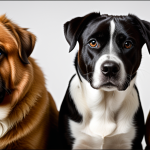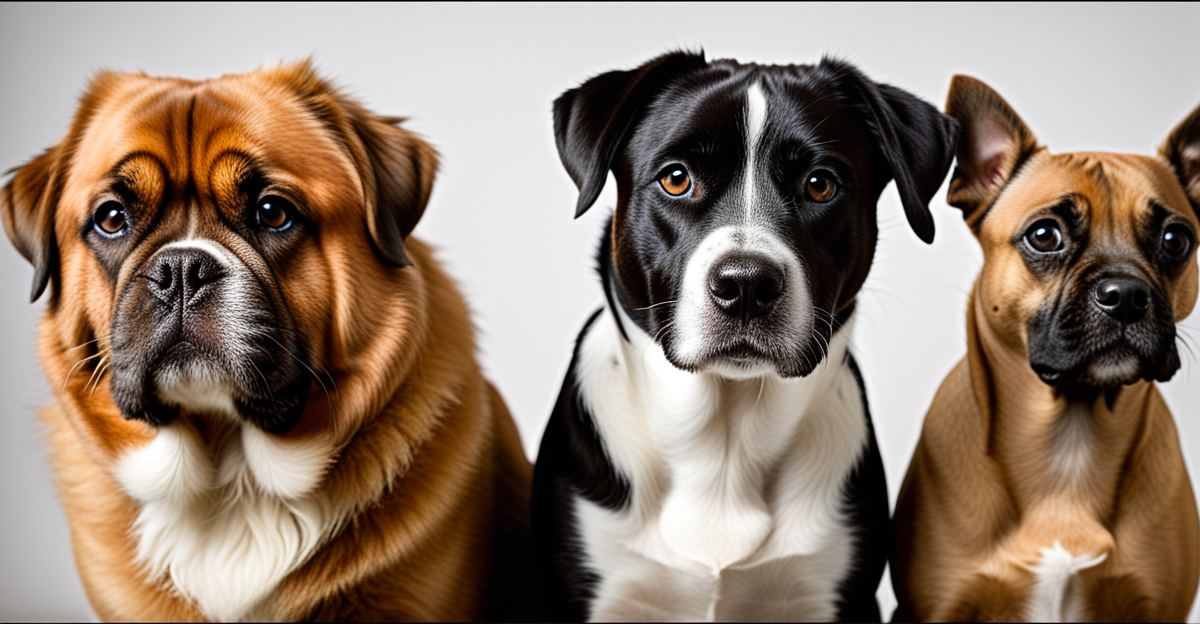Defining Unique Traits in UK Pet Breeds
Understanding what sets UK breeds apart is key
When discussing UK pet breed distinctions, unique traits reveal themselves through distinct physical features and personality differences shaped over centuries. These unique characteristics not only influence appearance but also behaviour and care needs.
Also to discover : How can UK pet owners find the best pet-friendly accommodations?
Recognising breed-specific characteristics is essential for selecting the right pet and providing appropriate care. For example, certain breeds exhibit traits such as high energy or a tendency towards independence, which directly impacts daily routines and training approaches.
The UK context plays a significant role in breed development and popularity. Local climate, historical uses, and cultural preferences have driven selective breeding, resulting in animals well-adapted to British environments. For instance, thicker coats in some breeds help counter the damp weather, while temperaments often reflect roles like herding or companionship.
Also to discover : What Are the Top Considerations When Choosing a Pet in the UK?
By understanding physical traits alongside personality differences, prospective owners can better match their lifestyles with a pet’s unique needs. This knowledge fosters responsible ownership and promotes the welfare of beloved UK breeds.
Defining Unique Traits in UK Pet Breeds
Understanding UK pet breed distinctions begins with recognising the unique physical traits and personality differences that set each breed apart. These distinct characteristics are essential when selecting a pet, as they directly influence care requirements and compatibility with owners’ lifestyles. For example, breeds developed in the UK often exhibit traits shaped by regional climates and historical functions, such as herding or companionship, leading to specific behavioural tendencies and physical adaptations.
In the UK context, breed development reflects both environmental factors and cultural preferences. This dual influence promotes certain breeds’ popularity, as their traits fit local needs like adaptability to indoor living or outdoor work. Recognising these breed-specific differences not only aids potential pet owners in making informed choices but ensures that the pets’ welfare is optimized through tailored care.
By focusing on personality differences and physical traits unique to UK breeds, enthusiasts gain a clearer understanding of what distinguishes one breed from another. This insight is crucial for aligning pet traits with owner expectations and circumstances, ultimately contributing to successful companionship.
Notable UK Dog Breeds and Their Characteristics
Bringing to life the best-known UK dogs
UK dog breeds showcase a variety of distinguishing features that reflect their unique origins and uses. Take the British Bulldog: its stocky build and distinctive wrinkled face are hallmark physical traits developed for strength and resilience. Meanwhile, the Border Collie is leaner and highly agile, with sharp intelligence driving its renowned herding abilities.
Each breed carries specific breed temperament traits essential for owners to understand. British Bulldogs tend to be gentle, affectionate, but sometimes stubborn, fitting well within family homes. In contrast, Border Collies require high mental and physical stimulation, exhibiting energetic and focused personalities needing active lifestyles. These personality differences are rooted in each breed’s historical role, such as bulldogs originally bred for bull-baiting and collies for controlling livestock.
Understanding these traits helps future dog owners select the right breed for their lifestyle. It highlights how the UK context—climate, work, and culture—has shaped every major dog breed’s distinct physical attributes and character. By acknowledging these, owners can provide targeted care and meaningful companionship to their pets.
Defining Unique Traits in UK Pet Breeds
Understanding UK pet breed distinctions begins with recognising how physical traits and personality differences form the foundation of each breed’s identity. These unique traits are not arbitrary; they result from centuries of selective breeding influenced strongly by the UK’s environment and cultural needs.
For example, breeds developed in the UK often have physical traits tailored to local climatic challenges, such as denser coats to withstand damp and cool weather. Similarly, personality differences are evident, with certain breeds bred for independent thinking or strong herding instincts, reflecting historical roles ranging from farm work to companionship.
Grasping these breed-specific characteristics is essential for prospective owners. It ensures a good match between the pet’s disposition and the owner’s lifestyle. This understanding also informs the right care approach, as traits like activity level or sociability influence daily routines and training.
The interplay between UK pet breed distinctions, physical traits, and personality differences creates a complex yet fascinating pattern that defines each breed’s uniqueness in the UK context. This knowledge empowers owners to make well-informed decisions and promotes the well-being of their pets.
Defining Unique Traits in UK Pet Breeds
UK pet breed distinctions reflect a blend of physical traits and personality differences that have evolved to suit local environments and owner needs. These unique traits are not merely aesthetic; they influence how each pet adapts to the British climate and lifestyle. For example, breeds with denser coats have developed to withstand the UK’s damp weather, while temperament often matches historical roles, such as companionship or work.
Understanding breed-specific characteristics is crucial for selecting the right pet. Knowing a breed’s energy levels, social tendencies, and grooming requirements ensures the pet fits well into an owner’s routine and home environment. This approach reduces potential behavioural issues and promotes welfare by addressing the breed’s innate needs.
The UK’s cultural preferences and historical context have strongly shaped breed popularity and development. This results in pets that are not only well-suited to regional conditions but also meet evolving owner expectations. Appreciating these unique UK pet breed distinctions helps prospective owners make informed decisions and fosters long-lasting, positive relationships with their pets.
Defining Unique Traits in UK Pet Breeds
Understanding what makes each breed truly distinct
UK pet breed distinctions rely heavily on a combination of physical traits and personality differences, which together define each breed’s uniqueness. Physical features like coat type, size, and coloration often reflect adaptations to the UK’s climate, such as thicker fur for colder, damp weather. These traits are not merely aesthetic; they influence care routines like grooming frequency and shelter needs.
Personality differences are equally important. Breeds may exhibit behaviors shaped by their historical roles—some are naturally more independent, while others thrive on close companionship or require high mental stimulation. Recognizing these personality differences ensures potential owners select breeds whose temperaments match their lifestyle.
The UK context guides how breeds have evolved and gained popularity. Cultural values and environmental conditions have driven selective breeding to create pets suited to indoor living or outdoor tasks, like herding or guarding. This creates a rich variety of breeds with clear distinctions.
Understanding these UK pet breed distinctions enables responsible ownership by aligning pet needs with owner capabilities, ensuring better welfare and satisfaction for both.
Defining Unique Traits in UK Pet Breeds
Understanding what differentiates UK breeds
UK pet breed distinctions are shaped by a blend of physical traits and personality differences that evolved to meet regional demands. These unique traits are critical for owners seeking pets well-suited to both the British climate and lifestyle. For example, denser and weather-resistant coats in certain UK breeds accommodate the often damp and cool environment. Similarly, behavioural tendencies such as independence or social engagement stem from historical functions like herding or companionship.
Grasping these breed-specific characteristics is vital for making informed decisions. Recognising personality differences helps align a pet’s temperament with an owner’s daily routine and energy level, while awareness of physical traits guides proper care and accommodation. This understanding not only enhances compatibility but also promotes welfare by respecting each breed’s innate needs.
The UK context considerably shapes breed development and popularity. Cultural preferences and environmental pressures have directed selective breeding over centuries, producing pets particularly adapted to local conditions. Acknowledging these factors enables potential owners to choose breeds best aligned with their expectations and living situations, fostering lasting, positive relationships.
Defining Unique Traits in UK Pet Breeds
Understanding what makes each breed truly unique
UK pet breed distinctions are deeply rooted in their physical traits and personality differences, shaped not just by genetics but by the British environment and culture. These unique traits help define each breed’s identity and suitability for various lifestyles.
Physical traits such as coat density, size, and body structure often reflect adaptation to the UK’s damp, cooler climate. For example, breeds with thicker, water-resistant fur withstand rain and chill better. These traits directly influence daily care, including grooming and shelter needs, which vary widely among breeds.
Meanwhile, personality differences reveal themselves in how breeds respond to training, socialisation, and activity levels. Some breeds are independent and reserved, while others are outgoing and require constant mental stimulation. Recognizing these personality differences is crucial for matching pets with owners’ routines and expectations.
The UK context — its distinct climate, culture, and history — has guided the selective breeding process, producing pets well-suited to local conditions. Appreciating these factors enhances understanding of UK pet breed distinctions and supports informed decision-making for prospective owners.
Defining Unique Traits in UK Pet Breeds
Understanding distinctive breed characteristics
UK pet breed distinctions revolve around specific physical traits and personality differences that have evolved in response to the British environment and lifestyle. Unique physical adaptations, such as thicker coats, help animals thrive in damp and cooler climates typical of the UK. These traits often influence daily care needs, including grooming frequency and shelter requirements.
Personality differences also play a crucial role. For instance, many UK breeds were developed with particular temperaments to suit historic roles, from independent working dogs to affectionate companions. This behavioural diversity affects how pets relate to their owners and their suitability for different lifestyles.
Understanding these breed-specific characteristics is essential for responsible ownership. It enables potential owners to match breeds with compatible temperaments and physical needs, minimizing stress for both pet and owner. Furthermore, the UK’s cultural preferences and environmental factors have historically shaped breed popularity and continue to influence selective breeding.
By recognising these unique traits within the UK context, owners can provide tailored care that supports animal welfare and strengthens the human-animal bond.









